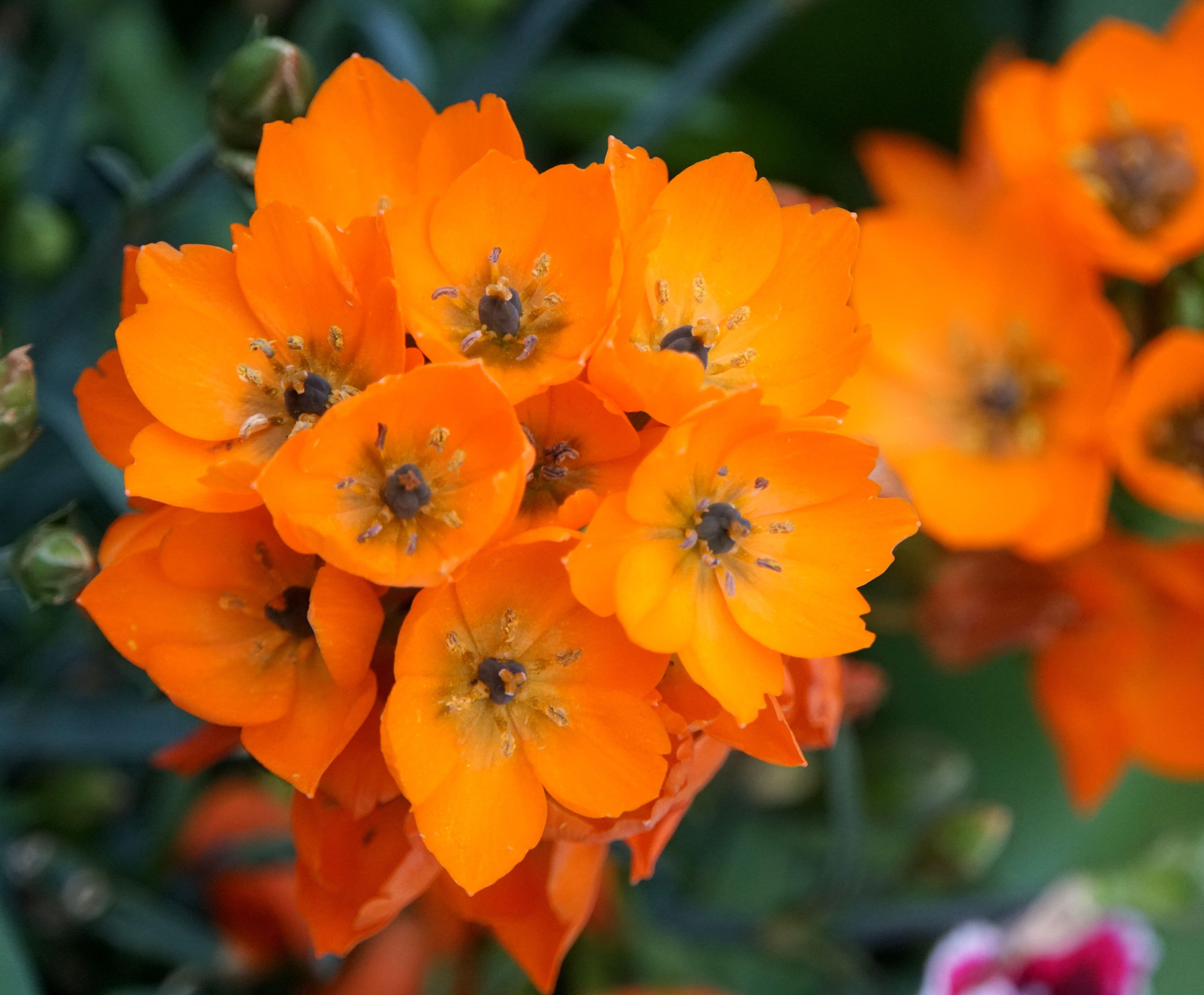How to care for an orange star plant
Expert advice on how to care for an orange star plant – tips for growing Ornithogalum dubium


Caring for an orange star plant is pretty easy, once you get to know their growing habits. Also known as the Star of Bethlehem, snake flower and sun star, these vibrant flowering bulbs – with their clusters of bright orange flowers - will brighten up pots and borders year after year. They also make fabulous cut flowers for displaying indoors.
Originating from South Africa, these eye-catching spring blooms are real sun lovers, so if your yard is on the shady side, it’s well worth growing these in pots so they can be easily moved around.
Growing up to 1ft (30cm) tall they boast up to 15-20 star-shaped flowers on each stem and if naturalized in the ground, make a stunning display. Do be warned though, if growing conditions are just right, these bulbs can spread rapidly and be tricky to get rid of as flower bed ideas. Another reason to raise them in container garden ideas instead.
When and where to plant an orange star plant

‘If you decide to plant Star of Bethlehem flower bulbs in your landscape, do it in fall,’ say the team at Caribbean Garden Seed. ‘The plant is hardy in USDA Zone 3 with mulch and grows in Zones 4 to 8 without mulch.’ If you live in cooler climes this bold beauty can be raised in a conservatory or glass house and will bloom any time from late winter to spring for up to three months.
Total sun lovers these bulbs like nothing more than free-draining soil in a sunny spot. They can tolerate a little, occasional shade but this will reduce the number of flowers. Thriving in sandy, rocky situations they do like to be watered regularly – particularly during the growing period, prior to flowering – but can rot if left in waterlogged soil.
How to keep an orange star plant looking good
Outside, orange star plants bloom every spring for a couple of months. If planted inside they can keep producing flowers for upto three months straight, but there are a couple tips to keep these bulbs looking good, wherever they are. ‘Remove any faded flowers by pulling gently to separate them from the main stem,’ say the team at Bakker.com. ‘When the leaves turn yellow the foliage can be cut back.’ This ensures that the plant has stored up enough energy to form flowers for the following year.
Feeding with a slow-release liquid fertiliser throughout the growing period will encourage strong healthy growth and prolific flowering for this season and the next. This is particularly worth doing if growing in containers.
Can orange star plants become overcrowded?
In some growing situations this stunning plant can spread rapidly if left unchecked in borders. If you want to keep them in check or create a separate clump elsewhere in your yard, divide after flowering. Lift with a long-handled fork and carefully break into smaller clumps before replanting. Bulbs like to be planted about 2 inches (5 cm.) apart and at a depth of 5 inches (13 cm.).
If you wish to totally remove a clump do be sure to lift every part of the bulb, as the slightest section can quickly regrow.
Can you grow orange star plants in a pot?
Orange Star plants are well suited to growing in pots – particularly if you are in a cooler climate – below HDSA zone 7. ‘This variety is not so hardy, best planted in pots and protected over the winter months,’ says Tracey Coyne of The Anglia Bulb Company.
For the best results be sure to choose a pot with good drainage. Fill with specialist bulb compost with added grit or sand and be sure to keep well-watered but not waterlogged.
Are orange star plants prone to pests and diseases?
Orange star plants tend to be healthy and strong growers in the right conditions. They are not generally prone to pests and diseases, but all parts of the plant are toxic and the sap can irritate the skin, so do wear gloves and long sleeves when handling.
Sign up to the Homes & Gardens newsletter
Design expertise in your inbox – from inspiring decorating ideas and beautiful celebrity homes to practical gardening advice and shopping round-ups.

Journalist Jill Morgan has spent over 20 years writing and editing gardening, interior and property features. Titles she has worked on include The English Home, House Beautiful, Ideal Home, Houzz and Modern Gardens and she writes regularly for H&G as a Contributing Editor. Whilst she is a dab hand at renovation projects and DIY, she is happiest when out digging in the garden or planning a new border.
-
 Martha Stewart's intelligent cabinets 'take every inch into consideration' – their 'visually light' style will solve your small kitchen storage problems
Martha Stewart's intelligent cabinets 'take every inch into consideration' – their 'visually light' style will solve your small kitchen storage problems'Every kitchen can be beautiful and functional, no matter what the size': 9 years since sharing her clever storage, Martha's cabinets are just as beautiful
By Megan Slack
-
 This once-dated kitchen is now a timeless space with the coziest details – and its the classic color palette that's made it a chic, welcoming space
This once-dated kitchen is now a timeless space with the coziest details – and its the classic color palette that's made it a chic, welcoming spaceWarming colors and natural materials combine to create this enduringly classic kitchen scheme
By Molly Malsom